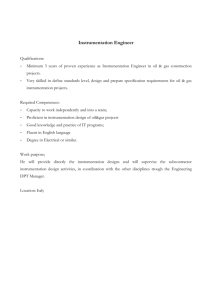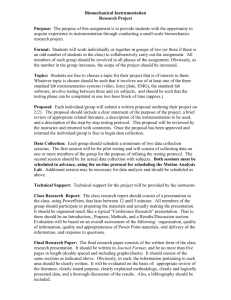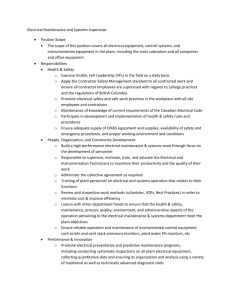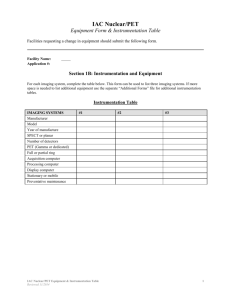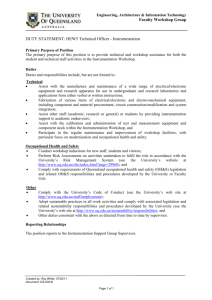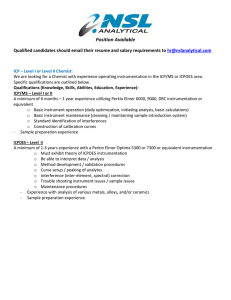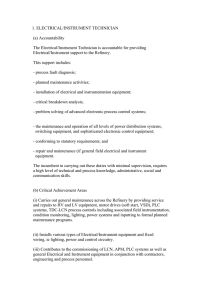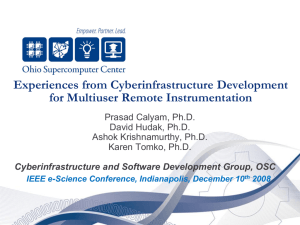Abstract art PowerPoint slide
advertisement
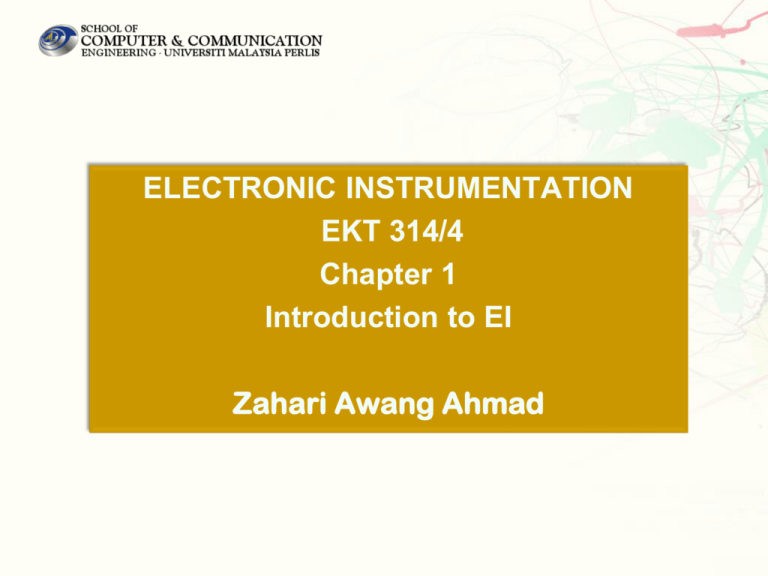
ELECTRONIC INSTRUMENTATION EKT 314/4 Chapter 1 Introduction to EI Zahari Awang Ahmad Introduction to Electronic Instrumentation In this Chapter, we will cover the introduction to Electronic Instrumentation which include the following : Definition Measurement Analysis o Direct Analysis. o Statistical Analysis. Instrumentation Element Application Field Review Definition of Electronic Instrumentation Instrumentation is the branch of engineering that deals with measurement and control. Instrumentation is defined as the art and science of measurement and control.[1] It serves not only sciences but all branches of engineering, medicine, and almost every human endeavor. Electronics Instrumentation is the application of measurement technology in electronic-related field. [1] http://en.wikipedia.org/wiki/Instrumentation Related Definition Instrument A device or mechanism used to determine the present value of the quantity under measurement. Measurement The process of determining the amount, degree, or capacity by comparison (direct or indirect) with the accepted standards of the system units being used. Accuracy The degree of exactness (closeness) of a measurement compared to the expected (desired) value Related Definition Resolution The smallest change in a measured variable to which an instrument will respond. Precision Precision A measure of the consistency or repeatability of measurements, i.e. successive reading do not differ. (Precision is the consistency of the instrument output for a given value of input). Expected value The design value, i.e. the most probable value that calculations indicate one should expect to measure. Related Definition Error The deviation of the true value from the desired value. Sensitivity The ratio of the change in output (response) of the instrument to a change of input or measured variable. Measurement The process of comparing an unknown quantity with an accepted standard quantity. The process of determining the amount, degree, or capacity by comparison (direct or indirect) with the accepted standards of the system units being used. Measurand Displacement Vector representing a change in position of a body or a point with respect to a reference. Strain Relative deformation of elastic, plastic, and fluid materials under applied forces. Vibration Oscillatory motion which can be described in term of amplitude (size), frequency (rate of oscillation) and phase (timing of the oscillation relative to fixed time) Measurand Pressure Ratio of force commonly acting on a surface to the area of the surface. Flow Stream of molten or liquidified material that can be measured in term of speed and quantity Temperature Measure of relative warmth or coolness of an object compared to absolute value. Force Defined as a quantity that changes the motion, size, or shape of a body. Measurand Torque Defined as the tendency of a force to rotate the body to which it is applied. Unit International System of Units (abbreviated SI from the French le Système international d'unités) It is the world's most widely used system of measurement, both in everyday commerce and in science. The SI was developed in 1960 from the old metre-kilogramsecond system. Base Unit Length Meter (m) Mass Kilogram (kg) Time Second (s) Electric current Ampere (A) Temperature Luminous intensity Amount of substance Kelvin (K) Candela (cd) Mole (mol) Derivative Unit Electric charge Electric potential difference Electric resistance Electric capacitance Electric inductance Energy Force Magnetic flux Power – – – – – – – – – coulomb (C) volt (V) ohm (Ω) farad (F) henry (H) joule (J) newton (N) weber (Wb) watt (W) Direct Analysis - Terminology Error is the degree to which a measurement nears the expected value. It can be expressed as: Absolute error Percentage of error Percentage of error Accuracy can be calculated based on error. Direct Analysis - Formula Direct Analysis - Formula SOLUTION


